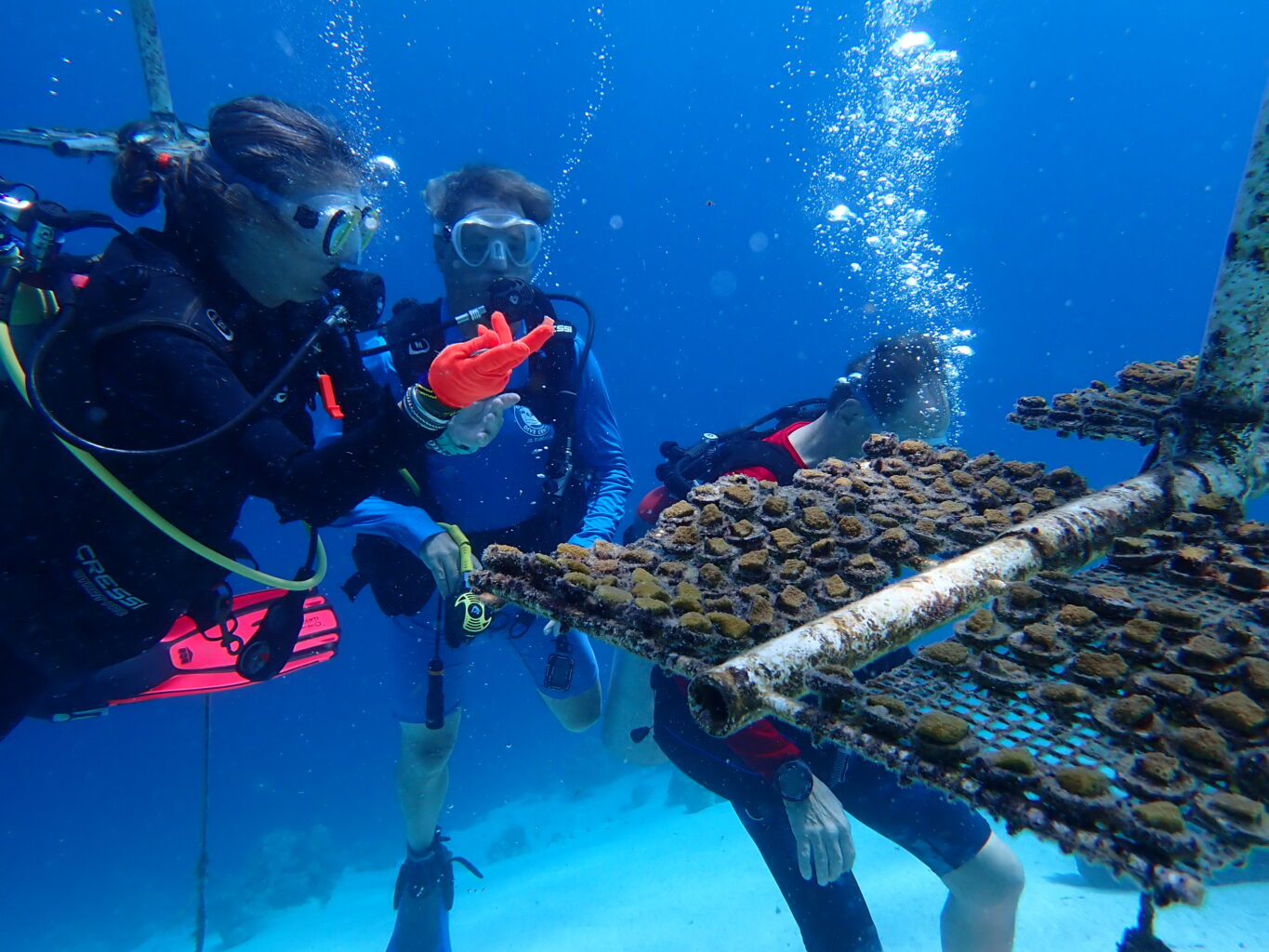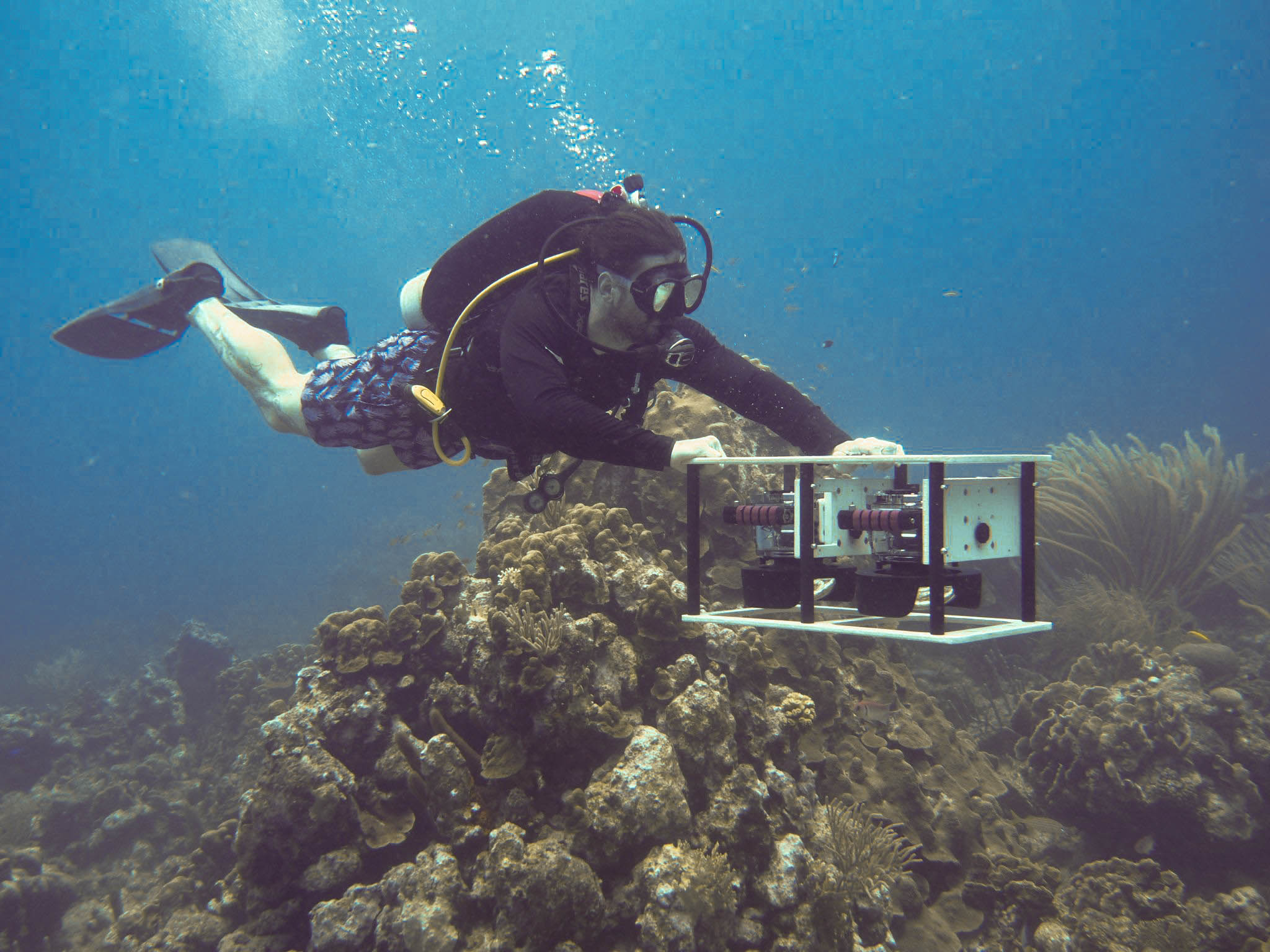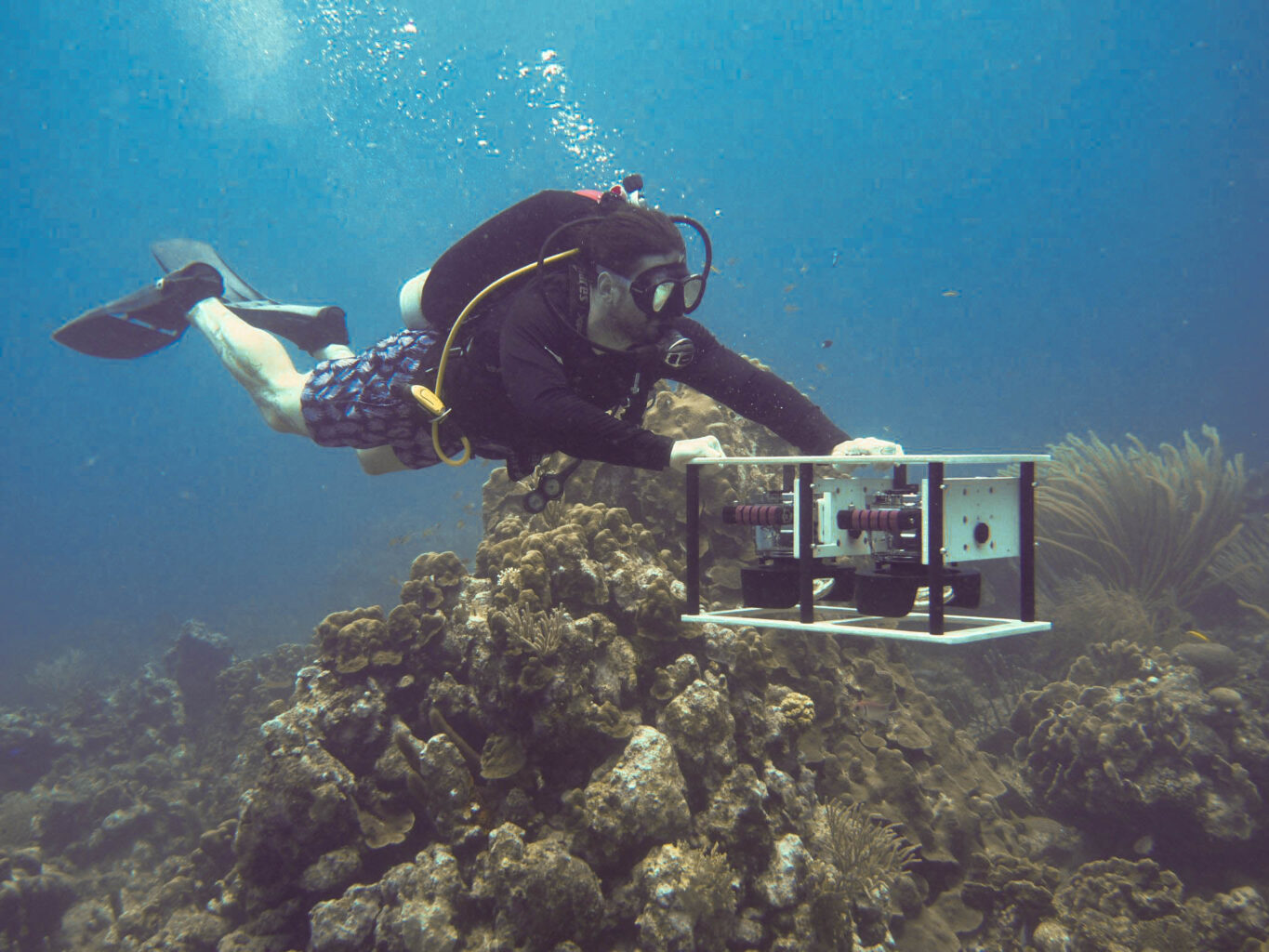A new disease that rapidly kills coral has been sweeping through reefs in the Caribbean, causing serious damage to corals that are already stressed by increasing ocean temperatures and acidity. Stony coral tissue loss disease (SCTLD) hit the island of Curaçao in 2023 and is expected to kill 25% of already depleted reefs there.
The disease kills stony, reef-building corals very quickly. There is no known way to save infected coral; currently, the only ways to fight this scourge are to stop the spread (some places are applying antibiotic pastes to uninfected corals) and to grow more coral.
To help repair some of the damage inflicted by this novel disease, Seacology made a grant to Reef Renewal Foundation Curacao for construction of a simple coral nursery. Corals will be grown there for later outplanting.
There is an urgent need for a new nursery because previous coral restoration efforts have focused on staghorn coral, which is highly endangered but fast-growing. SCTLD, however, primarily affects massive and boulder corals. Little work has been done to determine the best ways to cultivate and outplant these kinds of corals. This project will try different techniques, analyze progress, and disseminate the results to other researchers and conservationists worldwide.

















